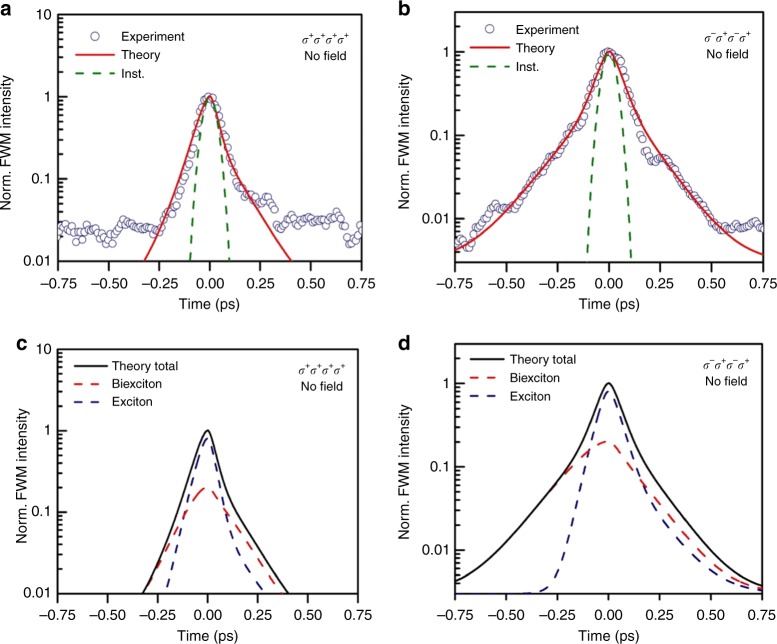Fig. 3.
Time-integrated FWM using circular polarizations. Time-integrated FWM intensity as a function of the time delay τ at zero magnetic fields for two different polarization sequences (σ+σ+σ+σ+) (a) and (σ−σ+σ−σ+) (b), where the individual polarizations correspond to the laser pulses A*, B, C, and detection, respectively. The time delay T between pulses B and C is kept fixed at 0 fs. Blue circles are the experimental data, whereas the red lines are the time-integrated FWM calculated using time-dependent DFT. The dashed green lines correspond to the instrumental response. The background noise level is lower for (σ−σ+σ−σ+) polarizations, due to better rejection of scattered light originating from the excitation laser pulses. c, d The final calculated time-integrated FWM curves (black line) are plotted together with contributions arising solely from the two-particle exciton correlations (blue dashed line) and four-particle biexciton correlations (red dashed line) for the two polarization sequences

